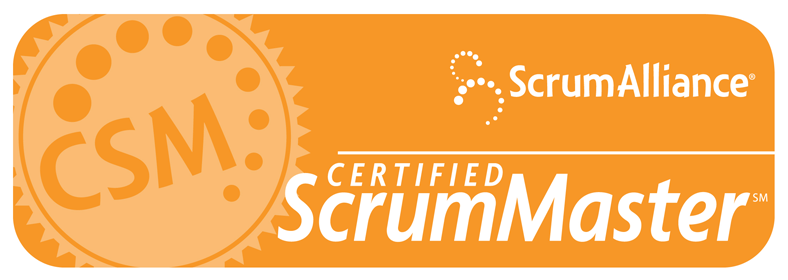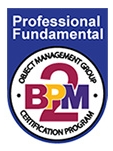On Tuesday Camunda Community Meeting took place at Holisticon and Jan Galinski and me were talking about
“Test-driven business process modelling with camunda BPM”. Round about 30 participants from consulting, customers and managers were taking part in the session, followed by half an hour of questions and answers. In the end we continued the discussion in even more relaxed athmosphere with beer an chips.
BPM/SOA projects are long running activities denoted by high complexity of requirements, which have to be communicated between the business, organization development and IT departments. The business process models are the core artifact: they serve as a foundation for communication, form a skeleton of the further business and software architecture and are executed by BPM-engines for the process automation. In order to enable the incremental and iterative development of the business process models methods and tools have to be invented, in order to guarantee the fulfillment of process quality and correctness. This talk demonstrates how to develop acceptance test for the BPMN 2.0 models involving the business department. The resulting tests are used for verification of the business process models first, but can be reused during the software development and integration and finally serve as a basis for creation of end-to-end integration test suites used for acceptance and regression. The clou: the tests are written in plain natural language and document the process and its attributes. Therefor they can be easily understood and even specified by the business departments.
What happens in 20 minutes: Starting with a prepared process model and some pre-defined test scenarios we demonstrate the principle of the behavior tests. Then we change the business requirement and simulate a test failure, so the process has to be adjusted, until the failure is gone.
Here are the slides (in German).
Testgetriebene Geschäftsprozessmodellierung Theorie from Simon Zambrovski on Vimeo.
Testgetriebene Geschäftsprozessmodellierung – Livedemo from Jan Galinski on Vimeo.
Geschäftsprozessmanagement mit Automatisierung (BPM/SOA) ist ein häufiges Thema für große Projekte die in mittleren und großen Unternehmen durchgeführt werden. Das Ziel solcher Projekte ist meist mit der Verbesserung der Wertschöpfungskette verbunden: durch die Automatisierung will man die Effizienz der Prozesse steigern, die ohne großen Einfluss und Entscheidung der Menschen funktionieren können. Die dadurch gewonnene Zeit und Mitarbeiter können sich dann auf komplexere und interessantere Bereiche der Wertschöpfung konzentrieren. Die Automatisierung in Software wird dabei meistens auch zur Integration von bestehenden Softwaresysteme im Unternehmen genutzt und wird durch ein Architektur-Paradigma unterstützt: die Service-Orientierte Architektur. Die komplexen Anforderungen an das Softwaresystem, welches für die Ausführung der Geschäftsprozesse zuständig ist optimal zu formulieren und umzusetzen, werden Geschäftsprozesse in Form von formalen Modellen beschrieben und mit den Fachspezialisten diskutiert. Sind die Modelle für die Analyse und die Beschreibung von Anforderungen erstellt, können diese sogar weiter verwendet werden, wenn für die Automatisierung eine BPM-Engine verwendet wird: ein Standardprodukt, welches die direkte Ausführung von Geschäftsprozessmodellen ermöglicht und die Anbindung von bestehenden weiteren Softwaresystemen ermöglicht.
Bei Durchführung solcher Projekte geht es nicht lediglich um Einführung eines neuen IT-Systems, sondern vielmehr um die Prozessorientierung im Unternehmen. Es geht um den kulturellen Shift und die Veränderung des Fokuses von Aufbau-organisatorischem zum Ablauf-organisatorischem. Diese Veränderungen ist ein großes Vorhaben und stößt nicht selten auf Widerstand im Unternehmen: es gilt dabei viele Brücke zu schlagen, den Leuten zu nehmen und zu Zusammenarbeit zu ermutigen.
Für die Durchführung von solchen BPM/SOA Projekten ist es ratsam ein agiles Vorgehensmodell zu verwenden und im betroffenen Unternehmen zu etablieren. Doch Vorsicht ist bei der Anwendung von gewohnten Softwareentwicklungs-Projektmanagementmethoden: diese führen gerade in den Anfangsphase des Projektes schnell zu unerwünschten Ergebnissen, weil die Komplexität und der Kontext sich von dem im klassischen Softwareentwicklungsprojekt klar unterscheidet. Mit der bei Holisticon AG entwickelten Methode BPMSOAgil, die meine Kollegin Claudia Cordes und ich auf der BPM in Practice 2013 vorgestellt haben, können BPM/SOA Projekte erfolgreich durchgeführt werden – das haben wir im praktischen Einsatz bewiesen.

Excellent conference by Camunda, which I could participate yesterday is BPMCon in Berlin, Germany. I loved a provocative and satiric keynote by Prof. Dr. Gunther Dueck and very polarizing Talks from Jakob Freund and Bernd Rücker. The demonstration of current innovations by the Camunda Core team was very exciting. After all we had also anogh time for delicious food and interesting talks with the members of core und community team.
My college, Jan Galinski and me were also speaking on incubation projekt camunda-bpm-testing. Our demo showed behavior-driven business process modelling aproach. Here are the slides:






